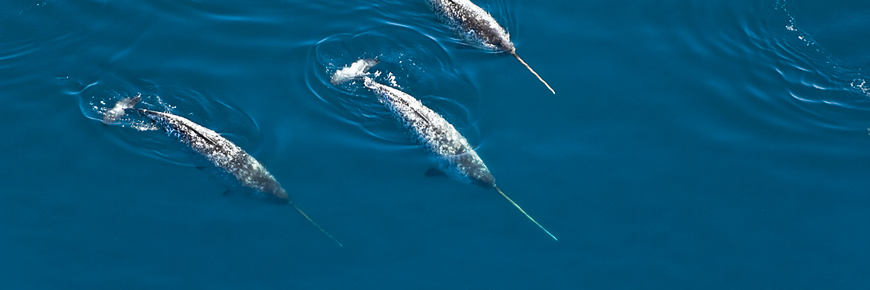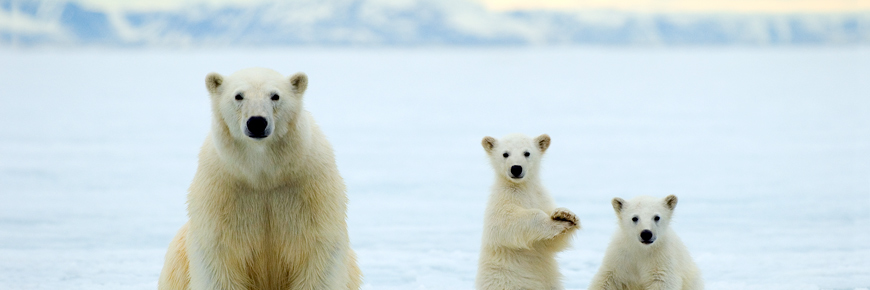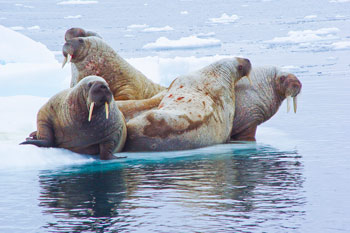
© Mario Cyr
Why protect Tallurutiup Imanga?
The Canadian Arctic is in a frozen state for the majority of the year and only a few well-adapted species remain there in all seasons. However, the waters of the eastern entrance to Tallurutiup Imanga remain open most of the year. This is due to the interaction of several major currents, along with winds and bathymetry, which bring an abundance of nutrients to the surface and support the food chain from the bottom up.
As a result, this area is the “ecological engine” for much of the Eastern Arctic, exploding with life for a brief period in the spring and summer with the return of the sun and warm weather.
International recognition

Tallurutiup Imanga is a natural and cultural seascape internationally recognized as one of the most significant ecological areas in the world:
- recognized as a natural site worthy of World Heritage Site status by the International Union for the Conservation of Nature (IUCN) in the 1980s
- identified as a Super Ecologically and Biologically Significant Area for the Arctic by the IUCN and the Natural Resource Defense Fund in 2010
- identified as an area of heightened ecological importance by the Arctic Council in 2013
- identified as a potential Arctic marine World Heritage Site by the IUCN, Natural Resource Defense Fund and the Marine World Heritage Program of UNESCO in 2016
Human occupation and use of the Tallurutiup Imanga region can be traced back to the Dorset (500 BC–1500 AD) and Thule (about 1000 AD until approximately 1500 AD) cultures that preceded the Inuit who live in the area today.
In the past, the region was on the route to Greenland travelled by the first Inuit who settled there. Inuit oral history describes the two-way movement of Inuit from one ocean to another between Canada and Greenland long before those countries were created. Inuit culture in the Canadian High Arctic is 3,000 years old and is expressed in stories, drum dancing, throat singing, Arctic sports and archeological sites.
Benefits of Tallurutiup Imanga National Marine Conservation Area (NMCA)
The NMCA in Tallurutiup Imanga will provide a number of ecological and social benefits, including:

- conserving the rich biodiversity and maintaining the ecological processes and life support systems of the marine ecosystem for the benefit of marine species, Nunavummiut (“people of Nunavut”) and Canadians
- maintaining a collaborative relationship between Canada and Inuit, formalized through the Inuit Impact and Benefit Agreement and implemented through a Joint National Marine Conservation Area Management Board, which will guide current and future activities in the NMCA to ensure the ecological and cultural viability of the area for future generations
- protecting and conserving species at risk and their habitats, like the bowhead and beluga whales, narwhal, walrus and polar bear
- helping to preserve the way of life and traditions of Inuit through protection of the marine environment and marine wildlife food sources
- allowing all activities within the NMCA to be managed in a more ecologically holistic manner
- protecting historical resources, such as shipwrecks and archaeological sites
- providing opportunities for visitors to experience and appreciate this environment
- encouraging ecological research and monitoring
- providing a level of resilience to a fragile Arctic marine ecosystem facing climate change
- encouraging ecologically sustainable economic opportunities in the region
- Date modified :